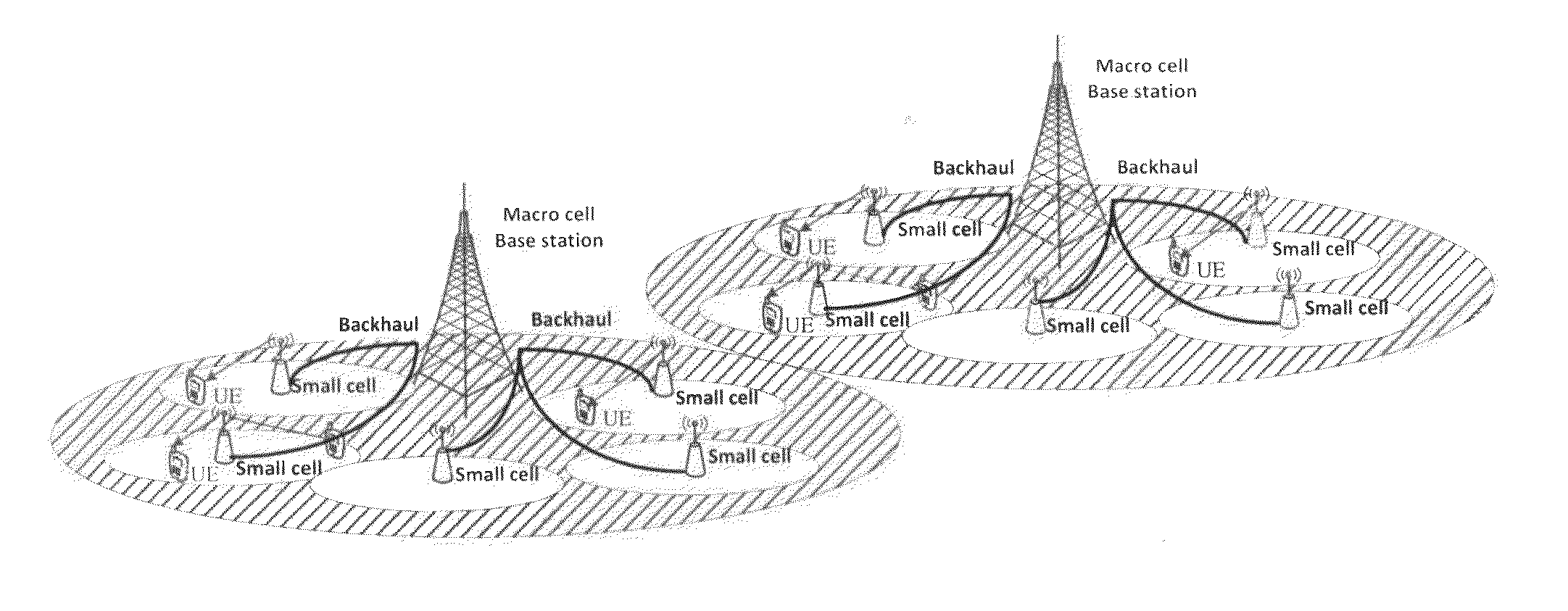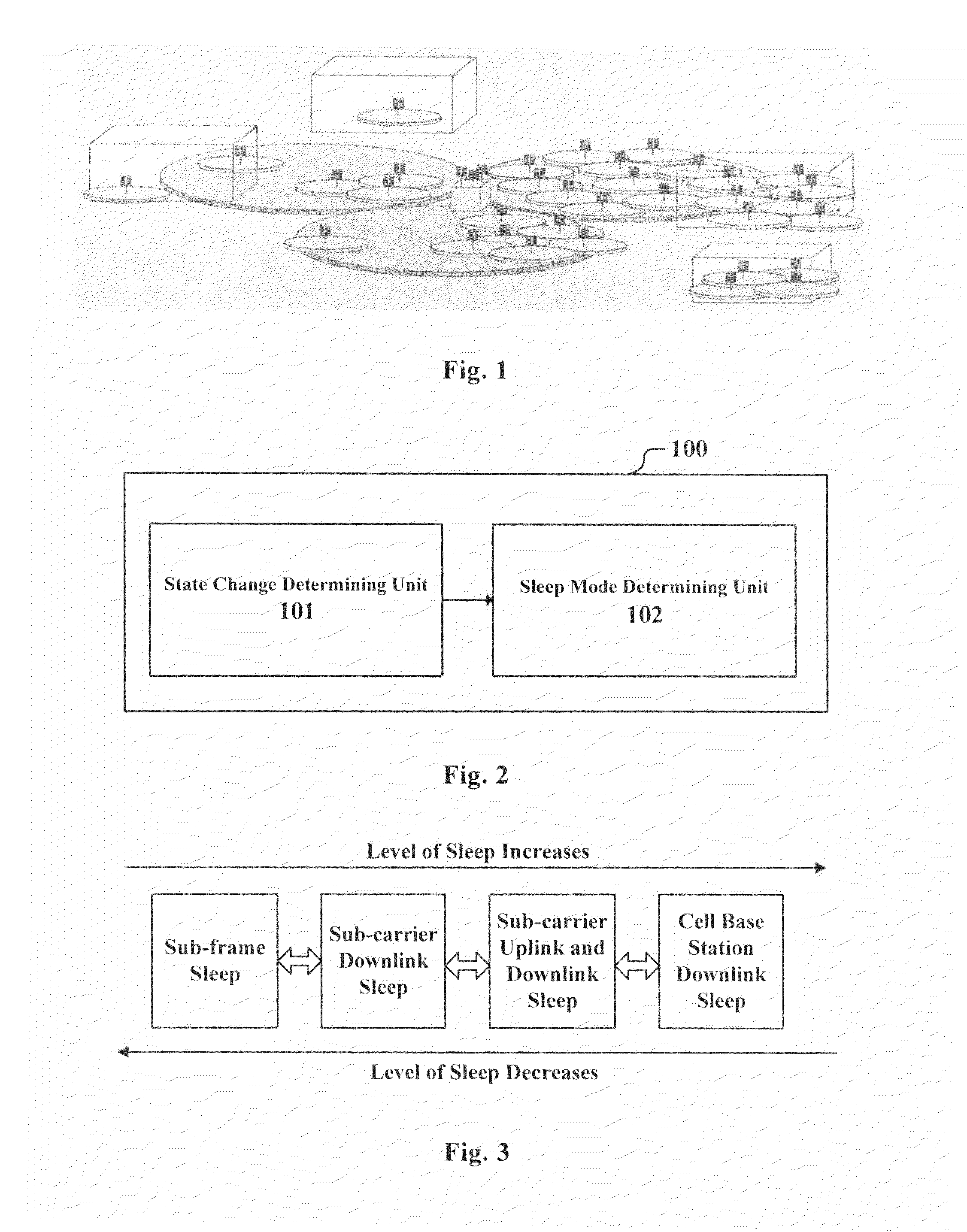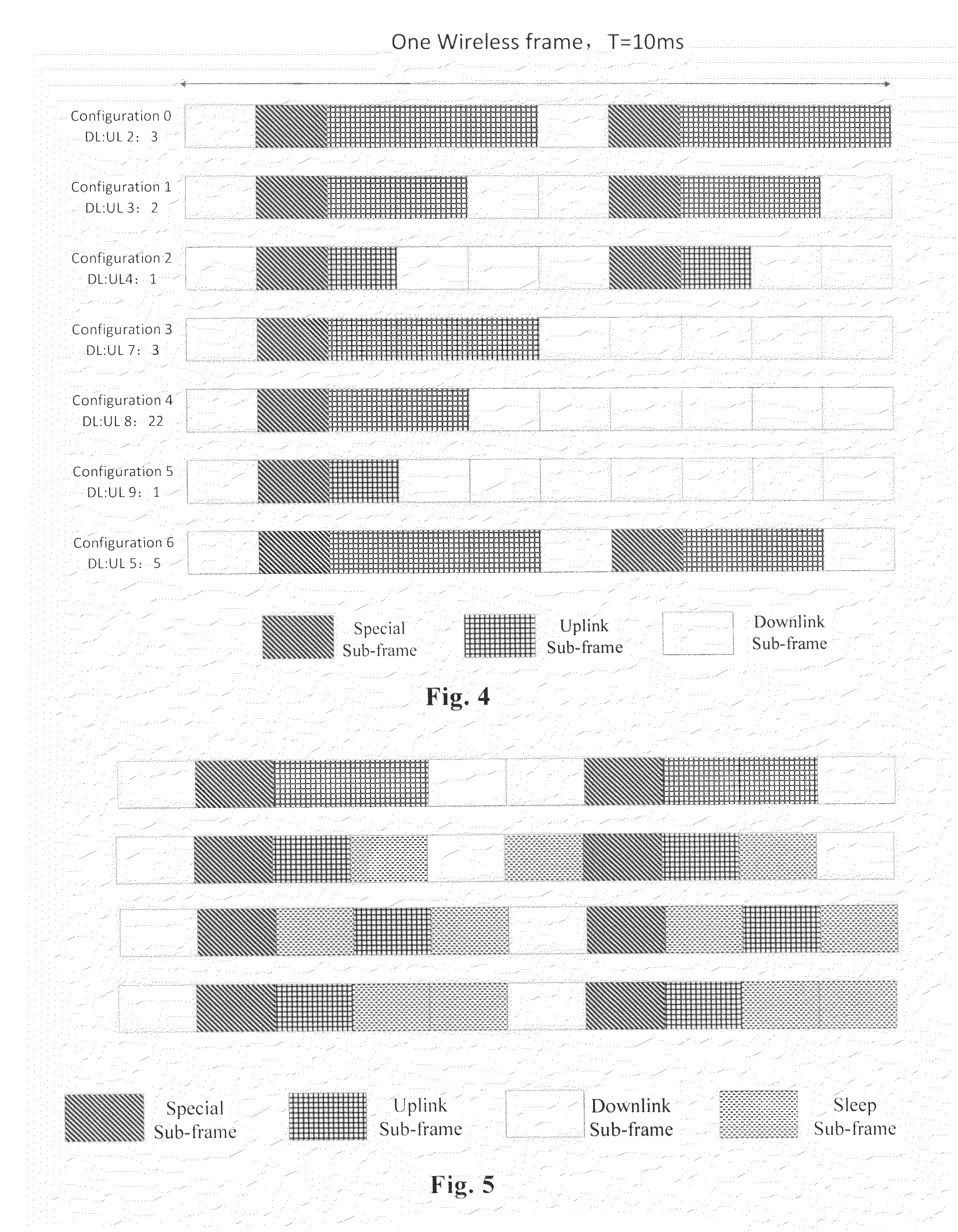Apparatus and method for controlling a change of operation state of a cell
- Summary
- Abstract
- Description
- Claims
- Application Information
AI Technical Summary
Benefits of technology
Problems solved by technology
Method used
Image
Examples
first embodiment
The First Embodiment
[0047]FIG. 2 illustrates an apparatus 100 for controlling a change of operation state of a cell according to an embodiment of the present application. As shown in FIG. 2, the apparatus 100 includes: a state change determining unit 101, configured to determine the change of operation state to be performed by the cell to be controlled, the change of operation state including change from active state to sleep state; and a sleep mode determining unit 102, configured to determine a sleep mode for the cell to be controlled so that the cell to be controlled has a different sleep mode from its adjacent cells, when the state change determining unit 101 determines to perform the change of operation state of the cell to be controlled.
[0048]Specifically, the state change determining unit 101 determines whether a certain cell to be controlled located in the controlling range of the apparatus 100 to perform changing of operation state and how to change such as turning off or o...
second embodiment
The Second Embodiment
[0071]FIG. 8 illustrates the diagram of an example of an application scenario including a macro cell to be controlled, a small cell to be controlled and the adjacent cells thereof, as well as the user terminals (UEs) in the cell. It is to be understood that FIG. 8 is only an example for the purpose of facilitating the understanding of the present application, and the scenarios where the present invention can be applied are not limited thereto.
[0072]As stated above, the state change determining unit 102 can determine the change of operation state to be performed by the cell to be controlled according to a certain criterion or factor. The criterion herein includes various suitable evaluation manners which are known or may be used in the future. Several non-limiting examples of the determining criteria will be described below.
[0073]FIG. 9 illustrates another example of the apparatus 200 for controlling the change of operation state of the cell. Various specific man...
third embodiment
The Third Embodiment
[0117]In the above embodiments, the apparatus 100 or 200 takes the change of operation state of only one cell to be controlled into consideration. In the following, an example of how to process under the condition of there being multiple cells to be controlled whose operation state is to be changed will be described with reference to FIG. 15 and FIG. 16.
[0118]FIG. 15 illustrates a structural block diagram of the apparatus 300 for controlling a change of operation state of a cell according to another embodiment of the present application. As shown in FIG. 15, besides the state change determining unit 101, the sleep mode determining unit 102 and the information acquiring unit 103 described with reference to FIG. 9, the apparatus 300 further includes a priority level ranking unit 104, configured to rank, in the case that it is determined there are multiple cells to be controlled whose operation states are to be changed by the state change determining unit 101, prior...
PUM
 Login to view more
Login to view more Abstract
Description
Claims
Application Information
 Login to view more
Login to view more - R&D Engineer
- R&D Manager
- IP Professional
- Industry Leading Data Capabilities
- Powerful AI technology
- Patent DNA Extraction
Browse by: Latest US Patents, China's latest patents, Technical Efficacy Thesaurus, Application Domain, Technology Topic.
© 2024 PatSnap. All rights reserved.Legal|Privacy policy|Modern Slavery Act Transparency Statement|Sitemap



